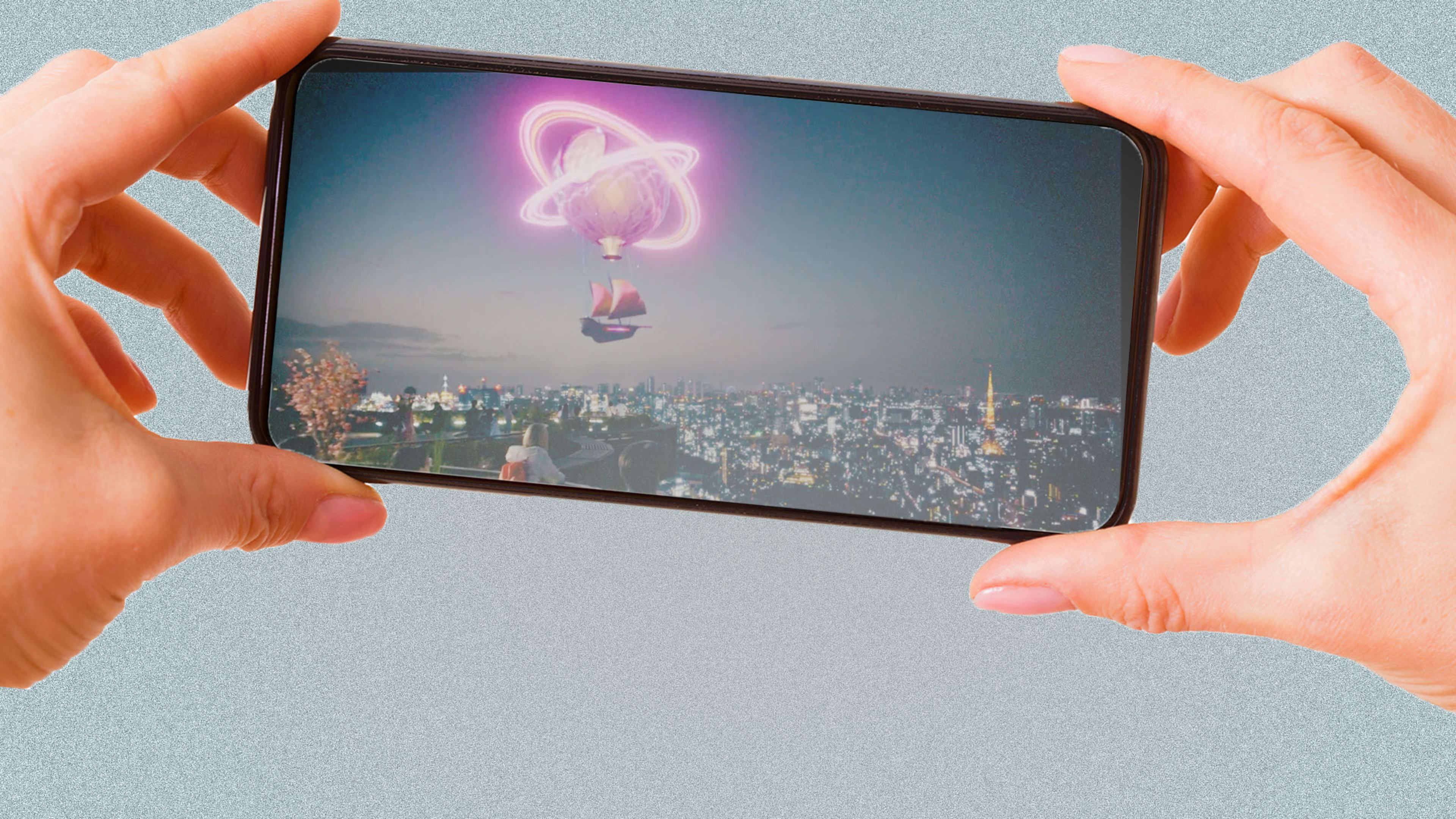Before Facebook, er, Meta, and Microsoft unveiled their high-profile and ambitious visions for the metaverse in October, Niantic founder and CEO John Hanke wrote a company blog post titled, “The Metaverse Is a Dystopian Nightmare. Let’s Build a Better Reality.” In it, the leader of the company behind the augmented reality games Pokémon Go, Harry Potter: Wizards Unite, and Ingress Prime says that too much of the conversation and vision around the metaverse is focused on escaping the real world in favor of a virtual one. “We believe we can use technology to lean into the ‘reality’ of augmented reality—encouraging everyone, ourselves included, to stand up, walk outside, and connect with people and the world around us,” wrote Hanke. “Technology should be used to make these core human experiences better—not to replace them.”
Now Niantic is launching its first-ever brand campaign to bring that vision to life. Dropping on National Hiking Day to put a finer point on it, the company is aiming to harness the collective power of its games and remind people that there is a company with its own unique vision behind them, one that sees technology’s potential outside in the real world.
Niantic’s director of worldwide product marketing, Archit Bhargava, says that from a marketing perspective, the company—which started within Google in 2010 and became an independent company in 2015—has traditionally invested in building its game brands, like the recently launched Pikmin Bloom. “Deep down, we’ve always felt and talked about Niantic having this backseat as a company facilitating these products,” Bhargava says. Launched in 2016, Pokémon Go, for example, became a global hit and has made $6 billion in revenue. “Especially now, with so much conversation about the metaverse and spending more time in these virtual worlds, we felt that it’s even more important for us to articulate our point of view. We wanted to find a way to do it in an elegant and energetic way.”
Created with the agency Gravity Road, the spot opens with a shadowy specter in the air, first above a suburban street, then a rainy city night, then a sun-drenched apartment window. You can’t quite make out what it is, but it’s big. It’s grabbing people’s attention as they work at their desks, watch TV, lay in bed. It sparks them into action. When they’re ready, their gaming handles flash above them, hero style. Then they’re adventuring through city streets, parks, and more, as video game prompts hail their attention. Bumblebee from The Transformers pops up on a street corner. Pikachu is on a girl’s shoulder. It culminates with a crowd ascending a grassy hill, city steps, and apartment roofs until the camera pans up to reveal an airship—Niantic’s logo—flying by as the beacon they’ve been following.
Bhargava says the augmented reality is intentionally subtle because they didn’t want to overshadow how awesome the real world is. “The idea was, what if this ship was calling people outside like an ice cream truck of optimism,” he says.
While long planned, the timing, in terms of how the metaverse has exploded into the larger culture conversation right now, couldn’t be better. The company is also taking the opportunity to invite developers into the fold with its new Lightship platform, an augmented-reality development kit launched last week for developers to access Niantic’s tools to build their own experiences.
The new ad actually premiered inside Ingress, accessed at in-game markers (or “portals”) at different physical geographic locations where players can access game inventory. The spot also includes several easter eggs for fans of its games to find and use to access exclusive merchandise and tickets to Niantic events.
Ultimately, the new campaign is yet another parent company hoping to remind people that there is a name behind the names they already know. Witness every P&G ad ever made. Or how Sony has long aimed to show all its gaming characters as roomies under one corporate roof. What makes Niantic a bit different is how this campaign serves not only as a reminder of what it is, but in the context of the broader metaverse, what it’s not.
Bhargava says too much of the metaverse conversation revolves around a general acceptance that the future will be largely spent in a virtual environment, and that the real world is something we’ve given up on. “We are absolutely anti that,” he says. “We’re focused on a future where technology and our tools can be a layer on top of reality—be additive, be subtle, and that’s what we want to represent in this vision.”
Recognize your brand’s excellence by applying to this year’s Brands That Matter Awards before the early-rate deadline, May 3.
